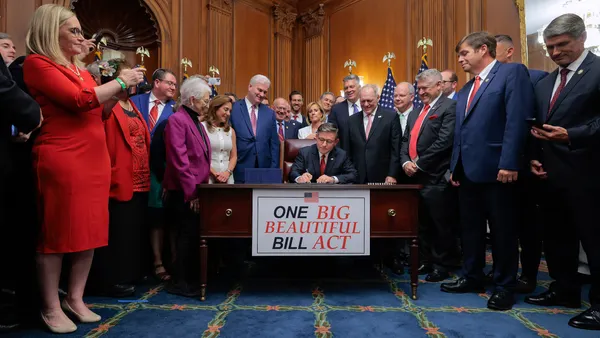The new CEO of O-I Glass tempered performance expectations until 2025 while laying out a slew of strategic changes during his debut earnings call Wednesday morning.
Those actions include accelerating temporary production curtailments in the third quarter — a move that aims to rapidly reduce inventory levels, but increases operating costs — and closing six furnaces to eliminate redundant capacity.
“We know and acknowledge that we have not yet reached the company’s full potential, nor consistently met the expectations of our shareholders,” said Gordon Hardie, who took over for longtime CEO Andres Lopez in May. “I've been impressed by the knowledge, skills and resilience of the O-I team across the company, as well as by their willingness to face reality and offer concrete ideas for improvement,” Hardie said during Wednesday’s second-quarter earnings call.
Hardie talked through the company’s newest “competitiveness” program, dubbed “Fit to Win.” The approach in part involves decentralizing O-I’s business model and conducting an “end-to-end supply chain review.”
“Fit to Win is not just another cost-out initiative,” Hardie said. “It will fundamentally reshape our company and how we work.” This includes “a set of self-help efforts that are within our control” that will “position us to more effectively take advantage of any market rebound.” However, it’s volume-agnostic. “It is my view that we do not require large near-term volume improvement to meaningfully boost the earnings power of the business,” Hardie said.
While Hardie is new as CEO at O-I, he’s not new to the packaging company; he has served on the board since 2015. That longtime involvement added to analyst skepticism, who didn’t sound immediately sold on the new tack.
George Staphos, research analyst with Bank of America Securities, said he’s covered O-I since 1992 and witnessed many restructuring or optimization programs. “You have to run or you’re gonna get eaten alive by the fixed cost. So why is this latest iteration of being more decentralized, being closer to the customer, going to work, when [in] the past it hasn’t necessarily worked?” he asked.
Similarly, Ghansham Panjabi, senior research analyst at Baird, asked about the “holistic difference” about what Hardie outlined versus previous programs.
Hardie said that in recent years the company has advanced productivity in certain parts of the business. He asserted that this new approach is more holistic because it involves an “end-to-end review across the entire business” back to suppliers.
O-I expects to curtail 15% of its capacity this year, compared with 8% last year, said CFO John Haudrich. O-I is absorbing $180 million of additional cost in the process.
The six furnace closures would happen over the next three quarters and represent about 4% of O-I’s capacity, Hardie said, and they are “a first step of network optimization.”
Hardie previewed that, down the road, the new strategy could involve geographic expansion into “new growth markets with large profit pools.” Analysts noted that Hardie’s predecessor made the decision to exit Asia. Asked about whether O-I would consider exiting other regions going forward, Hardie said it’s a question of whether O-I can have “reasonable share,” but he sees “a path to improving our economic profit” in all of the company’s current markets.
While destocking receded, except for in spirits, O-I continues to see weak consumption patterns. The company previously projected that sales volumes would be flat to up slightly in 2024; it revised those expectations Wednesday to flat or down. O-I is now looking ahead to next year, hoping the announced actions will “properly position the company for a strong 2025,” according to its earnings release.
O-I plans to host its third-quarter earnings call on Oct. 30. It has an investor day scheduled in New York on March 14, 2025.











